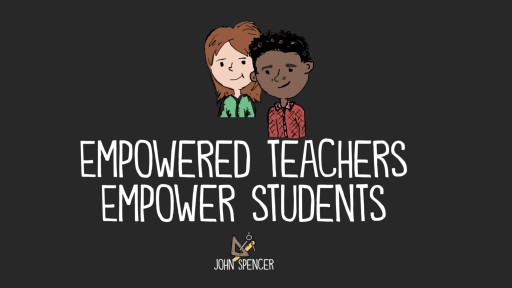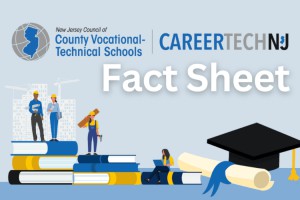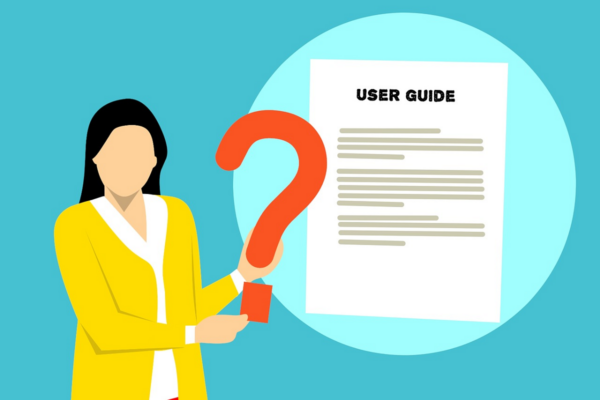Unleashing the Power of Special Education: Empowering Students for Success
Understanding Special Education: An Overview
As an educator, I believe that every student deserves an equal opportunity to succeed in their academic journey. This is especially true for students with special needs, who require additional support and accommodations to thrive in their education. Special education is a field that focuses on providing tailored instruction and support to students with disabilities, enabling them to reach their full potential.
Special education encompasses a wide range of disabilities, including but not limited to learning disabilities, intellectual disabilities, autism spectrum disorders, and physical disabilities. It is designed to address the unique needs of each student, providing them with the tools and resources necessary for academic success. By recognizing and embracing the diversity of learners, special education promotes inclusivity and equity in our educational system.
The Importance of Special Education
Special education plays a vital role in ensuring that students with disabilities have access to a quality education. It provides them with the specialized instruction and support they need to overcome barriers and succeed academically. Without special education, many students would struggle to keep up with their peers and may not reach their full potential.
One of the key benefits of special education is its focus on individualized instruction. Each student’s needs are carefully assessed, and an Individualized Education Plan (IEP) is developed to outline specific goals, accommodations, and support services. This personalized approach allows students to learn at their own pace and in a way that is tailored to their unique learning style.
Furthermore, special education promotes inclusivity and acceptance. By creating an inclusive learning environment, students with disabilities can interact with their peers and participate fully in school activities. This fosters a sense of belonging and helps to break down barriers and stigmas associated with disabilities. Inclusion benefits not only the students with disabilities but also their classmates, who learn important lessons about empathy, understanding, and diversity.

Laws and Regulations Governing Special Education
Special education is protected by various laws and regulations to ensure that students with disabilities receive the support and accommodations they need. In the United States, the Individuals with Disabilities Education Act (IDEA) is a federal law that guarantees a free and appropriate public education (FAPE) to students with disabilities. It outlines the rights and responsibilities of students, parents, and schools in the provision of special education services.
IDEA also mandates the development of an IEP for each student with a disability. The IEP is a legally binding document that outlines the student’s present levels of performance, goals, accommodations, and support services. It serves as a roadmap for the student’s education and provides a framework for collaboration between parents, educators, and other professionals involved in the student’s education.
Additionally, the Americans with Disabilities Act (ADA) prohibits discrimination against individuals with disabilities in all areas of public life, including education. This legislation ensures that students with disabilities have equal access to educational opportunities, facilities, and services.
Common Challenges Faced by Students in Special Education
Despite the progress made in special education, students with disabilities still face numerous challenges in their educational journey. One common challenge is a lack of understanding and awareness among educators and peers. Many people have misconceptions about disabilities, leading to stereotypes and stigmas that can hinder a student’s progress. It is crucial for educators and schools to promote disability awareness and foster a culture of inclusivity and acceptance.
Another challenge is the need for appropriate accommodations and support services. Students with disabilities may require specialized instruction, assistive technology, or additional time for assignments and exams. It is essential for schools to provide these accommodations and ensure that students have equal access to educational materials and opportunities.
Furthermore, transitioning from school to the workforce or higher education can be a significant challenge for students with disabilities. They may face barriers such as limited job prospects, lack of accessible transportation, and discrimination. It is important for schools and communities to support these students in their transition and provide resources and opportunities for their future success.
Strategies for Empowering Students in Special Education
Empowering students in special education requires a multi-faceted approach that addresses their unique needs and strengths. Here are some strategies that can help unlock their potential:
- Differentiated Instruction: Providing instruction that is tailored to the individual needs of each student is essential. This may involve using various teaching methods, adapting materials, and incorporating multi-sensory activities to cater to different learning styles.
- Building Self-Advocacy Skills: Teaching students how to self-advocate empowers them to express their needs and preferences. By developing self-advocacy skills, students can actively participate in their education, communicate their goals, and seek support when needed.
- Collaboration and Communication: Encouraging open communication and collaboration between teachers, parents, and other professionals is crucial. Regular meetings and progress updates ensure that everyone is working together to support the student’s success.
- Promoting Positive Reinforcement: Recognizing and celebrating the achievements of students in special education boosts their confidence and motivation. Positive reinforcement can come in the form of praise, rewards, or certificates, emphasizing their strengths and progress.
- Providing Assistive Technology: Assistive technology tools and devices can enhance learning and independence for students with disabilities. From speech-to-text software to adaptive devices, these tools level the playing field and enable students to fully engage in their education.
By implementing these strategies, educators and schools can create a supportive and inclusive learning environment that empowers students in special education.
The Role of Parents and Caregivers in Special Education
Parents and caregivers play a vital role in supporting the educational journey of students in special education. Their involvement and advocacy can make a significant difference in their child’s success. Here are some ways parents and caregivers can contribute:
- Active Participation: Engaging in their child’s education by attending meetings, communicating with teachers, and volunteering in the classroom demonstrates a commitment to their child’s success. Active participation allows parents to stay informed about their child’s progress and collaborate with the school effectively.
- Building a Supportive Home Environment: Creating a supportive and nurturing home environment is essential for a student’s well-being and academic success. This involves establishing routines, providing a quiet study space, and fostering a love for learning through educational activities and resources.
- Advocacy: Parents and caregivers are their child’s best advocates. They can advocate for appropriate accommodations, support services, and inclusive practices. By working closely with the school and other professionals, parents can ensure that their child’s needs are met and that they have access to the resources necessary for success.
- Empowering Independence: Encouraging independence and self-advocacy skills in their child fosters confidence and resilience. Parents can support their child in developing skills such as organization, time management, and problem-solving, which are essential for navigating school and beyond.
Support Services Available for Students in Special Education
Students in special education have access to a range of support services that are designed to meet their unique needs. These services aim to enhance their academic progress, social-emotional development, and overall well-being. Here are some common support services available:
- Specialized Instruction: Special education teachers provide targeted instruction to address the specific learning needs of students with disabilities. This may involve individual or small-group instruction, modified curriculum, and the use of assistive technology.
- Related Services: Related services include a range of therapeutic interventions and supports that help students with disabilities succeed in school. Examples of related services include speech and language therapy, occupational therapy, physical therapy, and counseling.
- Transition Services: Transition services are designed to support students with disabilities as they prepare for life after high school. These services include vocational training, career counseling, job placement assistance, and community integration programs.
- Behavioral Supports: Students with disabilities may require additional support to manage challenging behaviors or develop appropriate social skills. Behavioral supports can include behavior intervention plans, social skills training, and counseling services.
It is important for parents, educators, and schools to collaborate to identify and provide the appropriate support services for students in special education. By leveraging these resources, students can overcome obstacles and reach their full potential.

Special Education Resources and Tools for Success
In addition to support services, there are numerous resources and tools available to empower students in special education. These resources provide additional support, assistive technology, and educational materials that can enhance their learning experience. Here are some examples:
- Online Learning Platforms: Online platforms offer a wealth of educational resources, interactive activities, and adaptive learning tools that cater to different learning styles. These platforms can be accessed at school or at home, providing students with additional practice and reinforcement.
- Assistive Technology: Assistive technology tools and devices are designed to support students with disabilities in their learning and daily activities. Examples include text-to-speech software, speech recognition software, magnification tools, and adaptive devices.
- Specialized Programs and Curriculum: There are specialized programs and curriculum available for students with specific disabilities or learning needs. These programs provide targeted instruction and resources that address the unique challenges faced by these students.
- Community Support Organizations: Local community organizations often provide support and resources for students and families in special education. These organizations may offer parent support groups, advocacy services, and recreational activities that promote socialization and inclusion.
By utilizing these resources and tools, students in special education can have access to a well-rounded and inclusive education that supports their individual needs and goals.
Promoting Inclusion and Acceptance in Special Education
Promoting inclusion and acceptance is a fundamental aspect of special education. It is important to create an environment where all students feel valued, respected, and included. Here are some strategies to promote inclusion and acceptance:
- Educate and Raise Awareness: Educating students, teachers, and the wider community about disabilities and special education is key to breaking down stereotypes and promoting understanding. This can be done through awareness campaigns, guest speakers, and disability-focused curriculum.
- Peer Support Programs: Peer support programs pair students with disabilities with their non-disabled peers, fostering friendships and promoting mutual support. These programs help break down barriers and create a sense of belonging and acceptance.
- Inclusive Classroom Practices: Incorporating inclusive classroom practices, such as cooperative learning, group projects, and differentiated instruction, allows students with disabilities to fully participate and engage with their peers. This promotes collaboration, empathy, and understanding.
- Anti-Bullying Initiatives: Implementing anti-bullying initiatives within the school community helps create a safe and supportive environment for all students. By promoting kindness, empathy, and respect, schools can prevent bullying and promote acceptance.
- Celebrating Differences: Emphasizing the strengths and achievements of students with disabilities helps to foster a culture of acceptance and celebration of diversity. Showcasing their successes and contributions to the school community helps break down stereotypes and build inclusive attitudes.
By implementing these strategies, schools can create an inclusive and accepting environment where students with disabilities can thrive and reach their full potential.
Celebrating Success Stories in Special Education
In the field of special education, there are countless success stories that demonstrate the power of tailored instruction, support, and inclusive practices. These stories highlight the achievements of students with disabilities, their resilience, and their ability to overcome obstacles. Celebrating these success stories is essential for inspiring others and promoting a positive narrative around special education.
One such success story is that of Sarah, a student with dyslexia. Despite struggling with reading and writing, Sarah’s special education teacher provided her with targeted instruction and assistive technology tools. With the support of her teacher and her family, Sarah developed a love for learning and gained confidence in her abilities. Today, she is a college graduate and an advocate for students with learning disabilities.
Another success story is that of Michael, a student with autism. With the help of his special education teacher and a team of professionals, Michael developed social skills and coping strategies that enabled him to succeed academically and interact with his peers. He went on to pursue a career in computer programming and has become a role model for other students with autism.
These success stories remind us of the transformative power of special education and the potential that lies within every student. By sharing these stories, we can inspire others and create a culture that celebrates the achievements of students in special education.





